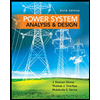
MATLAB: An Introduction with Applications
5th Edition
ISBN: 9781118629864
Author: Amos Gilat
Publisher: WILEY
expand_more
expand_more
format_list_bulleted
Concept explainers
Textbook Question
Chapter 11, Problem 9P
The relation between the tension T and the steady shortening velocity v in a muscle is given by the Hill equation:
(T+a)(v+b) = (T0+a)b
where a and b are positive constants and T0is the isometric tension. i.e., the tension in the muscle when v = 0. The maximum shortening velocity occurs when T = 0.
(a) Using symbolic operations, create the Hill equation as a symbolic expression. Then use subs to substitute T = 0, and finally solve for v to show that vmax=bT0)/a. (b) Use vmax from part (a) to eliminate the constant b from the Hill equation, and show that v=a(T0−T)T(T+a)0vmax .
Expert Solution & Answer
Want to see the full answer?
Check out a sample textbook solution
Students have asked these similar questions
a.
An average hole drift velocity of 103 cm/sec results when 2V is applied across a 1 cm long
semiconductor bar. What is the hole mobility inside the bar?
b. Name the two dominant carrier scattering mechanisms in nondegeneratedly doped
semiconductors of device quality.
c. For a give semiconductor the carrier mobilities in intrinsic material are (choose one: higher
than, lower than, the same as) those in heavily doped material. Briefly explain why the
mobilites in intrinsic material are (chosen answer) those in heavily doped material.
Find the steady-state expression for vo(t) in the following circuit if vg (t) = 64 cos(8000t) V.
31.25 nF
HE
+
Vg
+
- 2 ΚΩ
Vo
500 mH
Use PSpice to model the differential amplifier circuit shown in Fig. 4 in DIBO mode (double input balanced output). Use 2N3904 BJTs and use appropriate values for resistors (you can choose the values that will not lead to excessive gain and saturation) to demonstrate that the circuit provides differential amplification. Use Vcc = 5 and Vee = 5. Use a pair of sinusoids with opposing polarity (180 degree phase shift) as the inputs to the differential amplifier. Recall from the theory ic is needed to compute re. Make sure that the conditions set in the analysis of DIBO circuit are satisfied. Assume Rs1 = Rs2 50 Ω. Does your simulation match the theoretical gain? Explain any differences.
Chapter 11 Solutions
MATLAB: An Introduction with Applications
Ch. 11 - Prob. 1PCh. 11 - Define y as a symbolic variable and create the two...Ch. 11 - Prob. 3PCh. 11 - Prob. 4PCh. 11 - Prob. 5PCh. 11 - Use the commands from Section 11.2 to show that:...Ch. 11 - Prob. 7PCh. 11 - Prob. 8PCh. 11 - The relation between the tension T and the steady...Ch. 11 - Consider the two ellipses in the x y plane given...
Ch. 11 - A 120 in.—long beam AB is attached to the wall...Ch. 11 - A box of mass m is being pulled by a rope as...Ch. 11 - The mechanical power output P in a contracting...Ch. 11 - Prob. 14PCh. 11 - A tracking radar antenna is locked on an airplane...Ch. 11 - Prob. 16PCh. 11 - Define x as a symbolic variable and create the...Ch. 11 - Prob. 18PCh. 11 - The one-dimensional diffusion equation is given...Ch. 11 - A ceramic tile has the design shown in the figure....Ch. 11 - Show that the location of the centroid ycof the...Ch. 11 - Prob. 22PCh. 11 - Prob. 23PCh. 11 - The spread of an infection from a single...Ch. 11 - The Maxwell-Boltzmann probability density function...Ch. 11 - The velocity of a skydiver whose parachute is...Ch. 11 - 27. A resistor R (R = 0.4?) and an inductor L (L =...Ch. 11 - Prob. 28PCh. 11 - Determine the solution of the following...Ch. 11 - 30. The current, i, in a series RLC circuit when...Ch. 11 - Damped free vibrations can be modeled by a block...
Knowledge Booster
Learn more about
Need a deep-dive on the concept behind this application? Look no further. Learn more about this topic, statistics and related others by exploring similar questions and additional content below.Similar questions
- Derive the expression for the voltage gain of DIBO differential amplifier using AC analysis.arrow_forwardConsider the following circuit. + - 1.2 ΚΩ ig (1) vo ΣΕ ΚΩ € 50 nF 200 mH a) [6 pts] The frequency of the source current in the circuit is adjusted until vo is in phase with ig. What is the value of o in radians per second? (Hint: if vo is in phase with ig, the phase of total impedance must be zero (Ztot = vol ig), which means the phase of total admittance is zero. It will be easy to work with admittance in this question because the components are in parallel.) b) [2 pts] What is the total impedance at the frequency found in (a)? c) [2 pts] Ifig=2.5 cosoot mA (where o is the frequency found in [a]), what is the steady-state expression for vo?arrow_forwardConsider the following circuit with ig (t) = 200 cos(5000t) mA. 240 ΩΣ + 80 2: 2.5 µF 48 mH a) [3 pts] Obtain and draw the frequency-domain circuit. b) [3 pts] Use the current division to find the current flowing through the 240 2 resistor. c) [3 pts] Then calculate Vo in phasor form. d) [1 pts] Write the steady-state expression for vo(t).arrow_forward
- Q-Draw a sample and hold electronic circuit using op-amp then explain its operation. I hope the solution is from a human being and not from intelligencearrow_forwardDesign an AC-coupled (input and output) amplifier with a gain of -8 which has identical 3 dB corner frequencies of 10 kHz for high pass coupling at the input and output. Assume a power supply of 5 volts.arrow_forwardFind Laplace inverse for -25 -1 e S-1arrow_forward
- This question and its solution. Is the solution correct? If the solution is correct, assume that let R2 = 20 and a=500 . If it is wrong, solve it in your own way, away from the sources, and explain to me in detail with a pen and paper, please.arrow_forwardcan you compute the values inside the blue circles using the data from the plan above them? Please disregard the values (data/numbers) inside the circles.arrow_forwardThe average output voltage is found from Vac = = 2 2π/6 3√3 π -V #16 m √√3V™ cos ot d (ot) 0 = 1.654Vm m where Vm, is the peak phase voltage. I want detailed integration steps and how you reached this result.arrow_forward
- How would you solve this question using nodal analysis?arrow_forwardFor the circuit, calculate Vr. Calculate the threshold input voltage Vi that will change the output of the comparator from high to low. Show all calculations and explain your work.arrow_forwardI need expert solutions to thisarrow_forward
arrow_back_ios
SEE MORE QUESTIONS
arrow_forward_ios
Recommended textbooks for you
 Power System Analysis and Design (MindTap Course ...Electrical EngineeringISBN:9781305632134Author:J. Duncan Glover, Thomas Overbye, Mulukutla S. SarmaPublisher:Cengage Learning
Power System Analysis and Design (MindTap Course ...Electrical EngineeringISBN:9781305632134Author:J. Duncan Glover, Thomas Overbye, Mulukutla S. SarmaPublisher:Cengage Learning

Power System Analysis and Design (MindTap Course ...
Electrical Engineering
ISBN:9781305632134
Author:J. Duncan Glover, Thomas Overbye, Mulukutla S. Sarma
Publisher:Cengage Learning
Area Between The Curve Problem No 1 - Applications Of Definite Integration - Diploma Maths II; Author: Ekeeda;https://www.youtube.com/watch?v=q3ZU0GnGaxA;License: Standard YouTube License, CC-BY